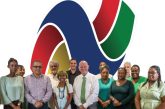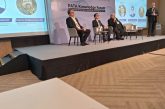
New edition of ITU’s flagship global ICT regulatory report
Trends in Telecommunication Reform 2015 tracks increasingly complex ICT
ecosystem of traditional and new-generation players
ATP- Arab tourism portal- Geneva – The latest edition of ITU s comprehensive report on global ICT regulatory developments, Trends in Telecommunication Reform 2015, reveals a fast-evolving ICT landscape, as devices and services proliferate, broadband connectivity becomes increasingly pervasive, and the hyper-connected world of the ‘Internet of Everything’ starts to become a reality.
The world’s most comprehensive overview of the policy trends and challenges facing today’s ICT regulators, ITU’s Trends in Telecommunication Reform 2015 provides a host of data and analysis to help regulators, ICT analysts and tech journalists navigate the issues surrounding so-called ‘fourth-generation’ ICT regulation.
Characterized by greater complexity and cross-sectoral implications, fourth-generation regulation attempts to come to grips with the enormous social and economic disruption ICTs are bringing in their wake. The report recommends flexible, light-touch regulation, and a recognition of the rights of both businesses and consumers in defining new frameworks for an emerging global digital environment.
“There are many ways in which ICTs can make the world a better place,” said Houlin Zhao, ITU Secretary-General. “In a digital world, creating the conditions for a data-driven economy to flourish is a must, so getting the regulatory environment right is absolutely vital.”
.jpg) To assist ICT regulators and policy makers, ITU has developed the ICT Regulatory Tracker, a new evidence-based analytical tool to help pinpoint the strengths and weaknesses of regulatory interventions. As featured in the report, the Tracker shows that an optimized combination of just a handful of key regulatory measures is closely associated with a catalytic effect on ICT market take-up.
To assist ICT regulators and policy makers, ITU has developed the ICT Regulatory Tracker, a new evidence-based analytical tool to help pinpoint the strengths and weaknesses of regulatory interventions. As featured in the report, the Tracker shows that an optimized combination of just a handful of key regulatory measures is closely associated with a catalytic effect on ICT market take-up.
The Internet of Things (IoT)
Trends in Telecommunication Reform 2015 confirms that future network traffic will increasingly be driven by machine-to-machine (M2M) traffic generated by billions of connected devices, products and sensors, with M2M communications over mobile cellular networks already emerging as the fastest-growing ICT service in terms of traffic.
In total, one billion different kinds of wireless IoT devices are expected to be shipped in 2015, up 60 per cent from 2014 figures to reach a predicted installed base of 2.8 billion connected devices by end 2015. Wearable devices are estimated to have reached 109 million by the beginning of 2015.
As many as 25 billion networked devices are predicted to be connected by 2020, driven largely by consumer-connected entities (including businesses, hospitals, local authorities and other organizations and institutions) and followed by manufacturing, utilities and transportation. In terms of revenues, the market for IoT is expected to grow to USD 1.7 trillion by 2019 to become the largest device market worldwide.
At the device level, demand for tablets is expected to reach 234.5 million units in 2015. And while global shipments of PCs and laptops is forecast to go into chronic global decline, analysts predict worldwide sales of up to 1.4 billion smartphones in 2015, exceeding the sales of the PC, television, tablet and game console sectors combined, in terms of both units and revenues.
For many consumers in developing markets, the Internet will be intrinsically linked to a smartphone – particularly with strong growth predicted in the low-cost smartphone segment. Strong growth in IoT deployment will also put new pressure on network infrastructure development, which is already facing funding challenges in many markets.
“This Trends report analyses how the changes that are taking place in the digital ecosystem are impacting both individual consumers and businesses and society at large,” said Brahima Sanou, Director of ITU’s Telecommunication Development Bureau, which produces the annual study. “The report addresses issues that span the full range of ICT policy-making, and delves into some important, but challenging, questions.”
The world goes social
The report finds that a proliferation of apps is turning consumers into digital social consumers, digital communicators and prime agents of change in a digital transformation that is sweeping the ICT sector.
In January 2015, the number of global active social media accounts reached over 2.07 billion, with active mobile social accounts representing 81 per cent of that total. With active social media users spending an average of nearly two hours 25 minutes per day on social platforms, the economic impact of the time spent on social media has not been lost on marketers and advertisers.
But while the blurring of lines between the physical and digital world is creating new economic opportunities, it is also raising a host of new social questions and challenges for regulators.
Consumers are presented with new opportunities brought about by the greater choice of devices, online services and applications – but are also more at risk of losing control of their privacy and personal information. Identifying proactive policy and regulatory measures in addition to co-regulatory and self-regulatory solutions and initiatives geared towards educating and empowering consumers is essential to providing frameworks that will stimulate investment and innovation while at the same time protecting the rights of all users in an open, transparent and inclusive digital world.
Data deluge
Every hour of every day, over one hundred million photos are uploaded to Facebook: every second, one hour’s worth of video footage is uploaded onto YouTube. Google is estimated to process well over a petabyte of data every single day – equivalent to 100 times the data stored in the largest library in the world, the US Library of Congress.
With the cost of computing (both processing and storage) falling and the speed and ease with which data can be transferred rising with ever-faster processor speeds, applications that draw on Big Data are proliferating.
Data that cost USD 150,000 to store in 1970 now cost as little as one cent. Advanced software to aid fast data retrieval, new-breed databases capable of storing very diverse and unstructured data, and fast-improving sensor technology are together making it possible to capture ever more aspects of human existence in digital form – precisely and at low cost.
The report outlines eight principles of Big Data implementation, and recognizes Big Data’s power as a driver of innovation. But it also warns of the potential downside to the dramatic increase in the collection and storage of data, including personal data, and notes that regulators will need to come to grips fast with both the positive and negative applications in order to maintain consumer trust.
Trends in Telecommunication Reform 2015 is available in paper, PDF, e-book and ‘PDF-accessible’ formats. It is the first publication available from the ITU Bookshop in PDF-accessible format.








